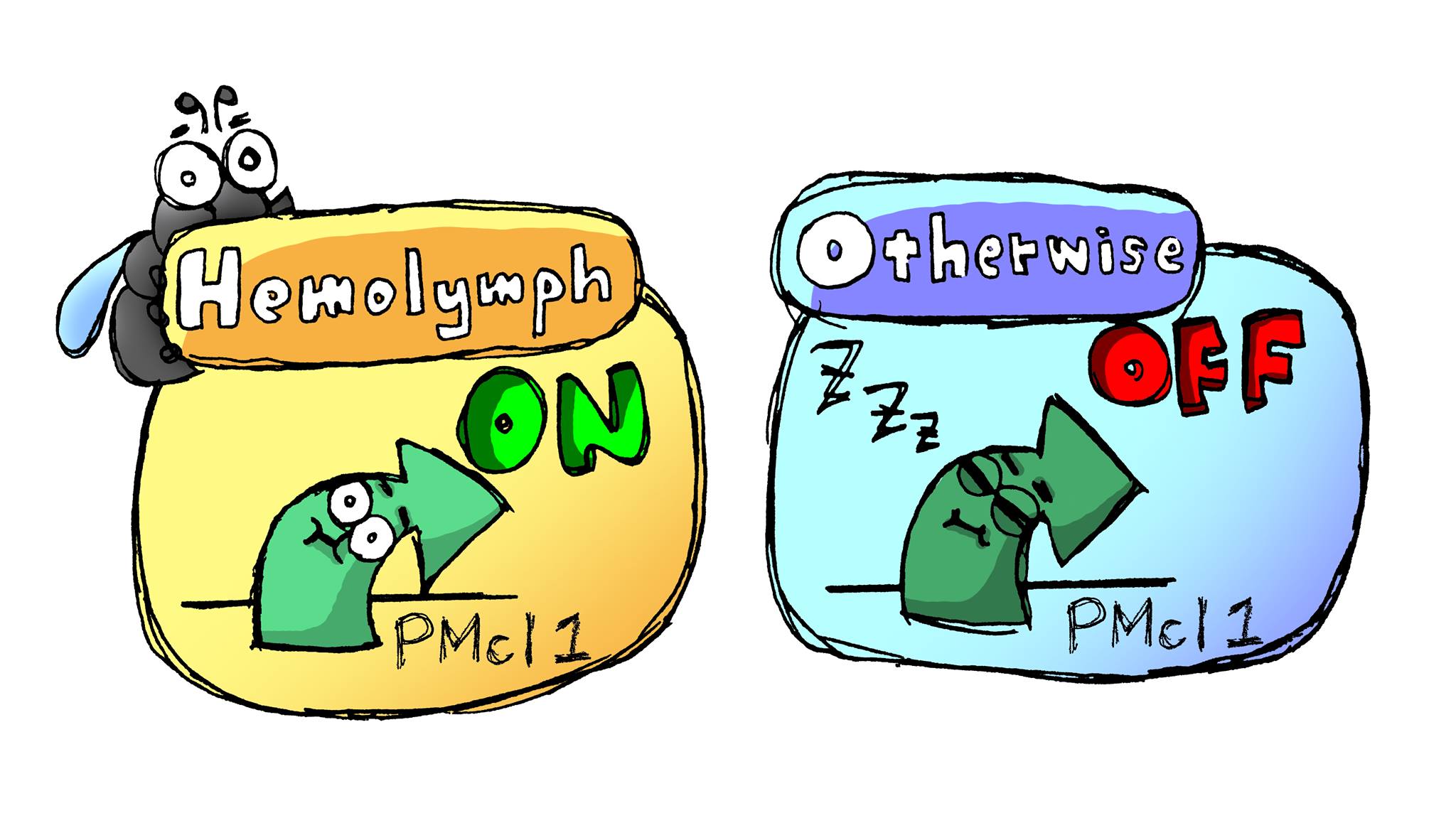Difference between revisions of "Part:BBa K2040100"
Chilam Poon (Talk | contribs) |
Chilam Poon (Talk | contribs) |
||
| Line 8: | Line 8: | ||
===Usage and Biology=== | ===Usage and Biology=== | ||
The entomopathogenic fungus ''Metarhizium anisopliae'' is widely used for biocontrol of pest insects. Genetic engineering is a useful tool to improve the virulence of entomopathogenic fungi and their tolerance to adverse conditions.The Mcl1 promoter is to date the only development-stage-specific promoter used in the genetic engineering of entomopathogenic fungi. Scientists used the insect-hemolymph-inducible promoter PMcl1 to limit the expression of insect-selective toxins to the heomocoel of the target insects, so that efficacy and safety of the genetic modified entomopathogenic fungi were increased<sup>[2][3]</sup>. | The entomopathogenic fungus ''Metarhizium anisopliae'' is widely used for biocontrol of pest insects. Genetic engineering is a useful tool to improve the virulence of entomopathogenic fungi and their tolerance to adverse conditions.The Mcl1 promoter is to date the only development-stage-specific promoter used in the genetic engineering of entomopathogenic fungi. Scientists used the insect-hemolymph-inducible promoter PMcl1 to limit the expression of insect-selective toxins to the heomocoel of the target insects, so that efficacy and safety of the genetic modified entomopathogenic fungi were increased<sup>[2][3]</sup>. | ||
| + | |||
NYMU 2016 designed a circuit with PMcl1, constructing a light inducible killswitch, for the genetic engineered entomopathogenic fungi whose virulence and tolerance were enhanced. We hoped that this killswitch can greatly mitigate the safety concerns of the GM fungi so that those enhanced fungi have greater possibility to be implemented in field. | NYMU 2016 designed a circuit with PMcl1, constructing a light inducible killswitch, for the genetic engineered entomopathogenic fungi whose virulence and tolerance were enhanced. We hoped that this killswitch can greatly mitigate the safety concerns of the GM fungi so that those enhanced fungi have greater possibility to be implemented in field. | ||
| + | [http://2016.igem.org/Team:NYMU-Taipei/Design NYMU 2016-Project design] | ||
[[Image:PMcl1 Q image.jpeg|center|700px|thumb|Insect-hemolymph-inducible promoter <b>''PMcl1''</b>]] | [[Image:PMcl1 Q image.jpeg|center|700px|thumb|Insect-hemolymph-inducible promoter <b>''PMcl1''</b>]] | ||
Revision as of 09:59, 16 October 2016
PMcl1, hemolymph inducible promoter from Metarhizium anisopliae
The expression of Metarhizium collagen-like protein MCL1 is only induced by insect hemolymph, and in insect hemolymph it is expressed at a high level. Using the promoter of Mcl1 (PMcl1)for genetically engineering Metarhizium, the expression of the target genes can be limited to the hemocoel of the target insects, ensuring the specificity and targeted expression of the genetically engineered fungal strains[1].
Usage and Biology
The entomopathogenic fungus Metarhizium anisopliae is widely used for biocontrol of pest insects. Genetic engineering is a useful tool to improve the virulence of entomopathogenic fungi and their tolerance to adverse conditions.The Mcl1 promoter is to date the only development-stage-specific promoter used in the genetic engineering of entomopathogenic fungi. Scientists used the insect-hemolymph-inducible promoter PMcl1 to limit the expression of insect-selective toxins to the heomocoel of the target insects, so that efficacy and safety of the genetic modified entomopathogenic fungi were increased[2][3].
NYMU 2016 designed a circuit with PMcl1, constructing a light inducible killswitch, for the genetic engineered entomopathogenic fungi whose virulence and tolerance were enhanced. We hoped that this killswitch can greatly mitigate the safety concerns of the GM fungi so that those enhanced fungi have greater possibility to be implemented in field.
[http://2016.igem.org/Team:NYMU-Taipei/Design NYMU 2016-Project design]
References
[1] Wang, C., & St. Leger, R. J. (2006). A collagenous protective coat enables Metarhizium anisopliae to evade insect immune responses. Proceedings of the National Academy of Sciences of the United States of America, 103, 6647-6652.
[2]Wang, C., & St. Leger, R. J. (2007a). A scorpion neurotoxin increases the potency of a fungal insecticide. Nature Biotechnology, 25, 1455e1456.
[3]Peng, G., & Xia, Y. (2015). Integration of an insecticidal scorpion toxin (BjaIT) gene into Metarhizium acridum enhances fungal virulence towards Locusta migratoria manilensis. Pest Management Science, 71, 58e64.
Sequence and Features
- 10COMPATIBLE WITH RFC[10]
- 12INCOMPATIBLE WITH RFC[12]Illegal NheI site found at 1673
- 21INCOMPATIBLE WITH RFC[21]Illegal XhoI site found at 853
- 23COMPATIBLE WITH RFC[23]
- 25INCOMPATIBLE WITH RFC[25]Illegal AgeI site found at 1229
- 1000INCOMPATIBLE WITH RFC[1000]Illegal BsaI.rc site found at 1179
Illegal SapI site found at 1130

